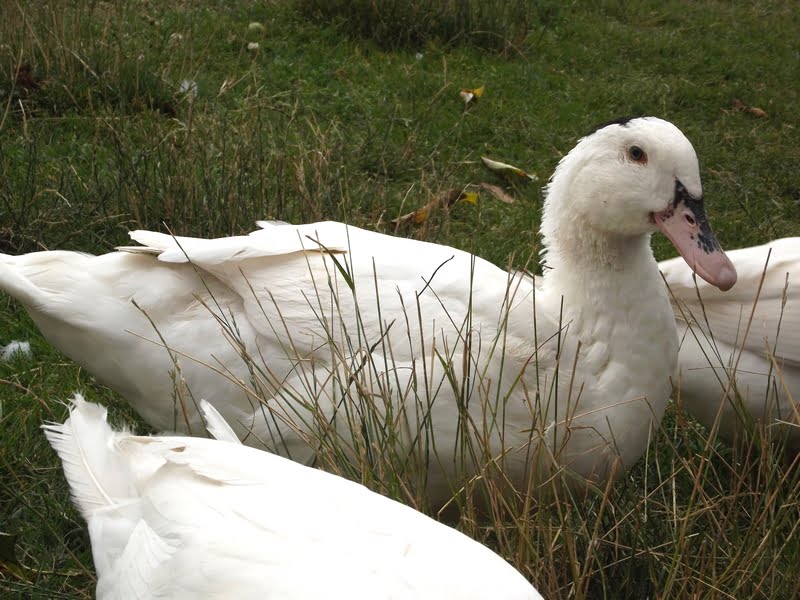Fine foie gras is about to become much more expensive.
The French Ministry of Agriculture has made the drastic decision this week to slaughter all farmed ducks in the main foie gras region of the country. It’s doing so to prevent the spread of an especially virulent strain of bird flu known as H5N8. French Agriculture Minister Stéphane Le Foll told France Bleu radio on Tuesday that every farmed duck in the Landes department in south-western France is to be killed. Approximately 600,000 ducks will be killed in this cull. (“Cull” is a term-of-art referring to the selective slaughter of animals.)
This is actually the second major duck cull this year. The first French duck cull took place in January, when several hundred thousand ducks were culled in the areas of Landes, Gers, Hautes-Pyrenees and Pyrenees-Atlantiques. These areas are at special risk for avian influenza because they are within the migratory patterns of wild fowl, allowing cross-infection between wild and domestic birds.
These culls are taking place for one big reason. Preventing a pandemic
H5N8 was first spotted in wild geese in November, and French farmers have been struggling to control the virus ever since. The French government reports that there have been 273 outbreaks of the H5N8 strain of the virus in farms across France, and 28 identified in the wild. Over 120 of these outbreaks were in Landes, and another 92 in the nearby Gers department. Once the virus is detected on a farm, all birds on the farm are culled to avoid transmitting the disease. This most recent cull will cost fois gras producers about 284 million dollars, and eliminate approximately one quarter of French fois gras production this year.

On its own, H5N8 does not represent a major global health problem. Human health is not at risk from H5N8. It does not infect mammals, only birds, and the culls are put into place to protect the poultry industry rather than human health. However, avian influenza viruses closely related to H5N8 do infect humans and cases of infection have been detected in China. According to the World Health Organization, human infections with A(H5) viruses are rare but they can lead to severe illness or death in humans. Viruses mutate and evolve all the time; in the future, H5N8 could easily develop the capacity to infect, and kill, humans and other mammals.
This slaughter is one more indication that this has been a VERY bad bird flu season. That’s bad for people too.
France’s avian influenza problem is part of a bigger picture.
The 2016-2017 flu season has been unusually severe, with many varieties of influenza being reported in both higher than usual numbers and in an unusually broad geographic range. Both Europe and Asia are reporting record numbers of influenza infections. Meanwhile, China is facing a major outbreak of H7N9 influenza, which does infect humans. This virus infects poultry easily and with few or no symptoms. It often goes undetected until the people who work with birds get sick. Infected birds infect humans, and in humans the virus is much more serious. Infection in humans leads to high fever, cough, shortness of breath and often turns into severe pneumonia; complications of H7N9 include acute respiratory distress syndrome, septic shock and multiple organ failure. It is especially fatal to pregnant women.
At present H7N9 is rarely transmitted from human to human, but that appears to be changing. There are several cases in China of H7N9 where human-to-human transmission of H7N9 can’t be ruled out, and at least one flu cluster in the US where human-to-human transmission of H7N9 seems very likely.
In January, China reported 192 cases of H7N9 infection, of which 79 people died. The WHO considers tracks influenza in “waves,” which run from October first to September 30 of the following year. We are presently in the fifth wave of H7N9. The current wave is the most intense to date. 23 counties in China provinces reported their first human cases of H7N9 in this wave.
It’s a complicated situation, but it’s not time to panic yet.
The World Health Organization constantly monitors avian influenza data. It has not changed its estimate on the dangers of the influenza viruses at the human-animal interface. Their most recent risk assessment states that “The overall public health risk from currently known influenza viruses at the human-animal interface has not changed, and the likelihood of sustained human-to-human transmission of these viruses remains low.”
The best protection against avian influenza, and influenza overall, are traditional public health measures. On an individual level, WHO calls for travelers to countries with known outbreaks of animal influenza to avoid farms, contact with animals in live animal markets, entering areas where animals may be slaughtered, or contact with any surfaces that appear to be contaminated with animal feces. Travelers should wash their hands often with soap and water, and follow good food safety and good food hygiene practices (One assumes this is also true for inhabitants.) At a national level, WHO calls for countries to adhere strictly to the International Health Regulations (IHR), and report accurately about influenza as cases occur. All influenza cases with a potential for pandemic are required to be reported. Overall, they state, “epidemiological and virological surveillance and the follow-up of suspected human cases should remain high.”
Pandemic influenza is edging closer as viruses evolve and world travel increases, but it’s not here yet. Good epidemiology, whether in flocks of ducks or hospitals full of humans, will buy us time.
By Atlasroutier – Own work, CC BY-SA 3.0, Link
